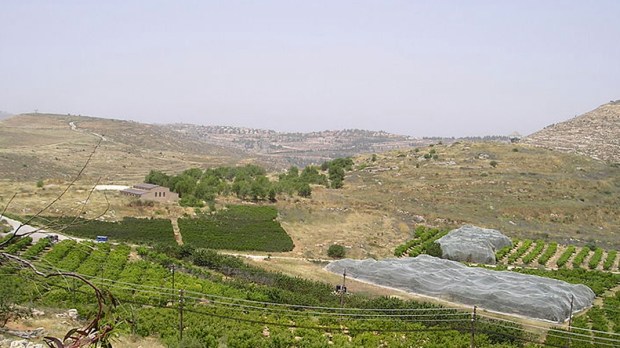Lenten Campaign 2025
This content is free of charge, as are all our articles.
Support us with a donation that is tax-deductible and enable us to continue to reach millions of readers.
Scott Stripling holds a Bible in one hand and a shovel in the other as he speaks with a reporter from the Jerusalem Post.
“The Bible and other ancient religious texts is what has driven archeology in this region,” said Stripling, director of excavations at ancient Shiloh and head of the Associates for Biblical Research. “We have to recognize the validity of the Bible … I am comfortable with the biblical story—and now we have proof of that story, really.”
The archaeologist said his shovel—and other tools—have helped him find “consistency between what we read in the text and what we find on the ground.”
The latest example of that involves a horned altar mentioned in Scripture. The stone horn, one of the four corners of an ancient altar, as described in Kings, was found this summer in the field of ancient Shiloh.
“When the news reached Joab, who had conspired with Adonijah though not with Absalom, he fled to the tent of the Lord and took hold of the horns of the altar” (1 Kings 2:28).
The discovery is consistent with what Stripling expected to find in the fields of the ancient city where the tabernacle for the Ark of the Covenant once stood.
In the last three years, Stripling and his team also uncovered multiple large pithoi—collar-rimmed jars—inside a series of “storage rooms” that they found around the ancient city. The jars probably held grains and fruits, which Stripling said were tithes, brought by the Israelites to the Temple.
In addition, in the summer of 2018, Stripling’s team found a ceramic pomegranate, which he said was a sacred symbol. “The only sites in Israel where we have found pomegranates like this one have been Levitical sites,” he said, referring to the priestly class of Levites. He said the Bible describes pomegranates hanging from the bottom of the robe of the High Priest, who served in Shiloh for more than three centuries, after the conquest of Canaan until King David established Jerusalem as the capital. The pomegranate he found measures between 2.5 and three inches and has hooks by which it could be hung.
In Exodus 23:33, we read, in reference to the High Priest’s dress: “Make pomegranates of blue, purple and scarlet yarn around the hem of the robe, with gold bells between them.”
Of the seven sacred foods in ancient Israel—two grains and five fruits—only one “goes into the presence of God,” Stripling said, and that is pomegranate.”
The Post article said the site Stripling is excavating has been examined before, first by a Danish team in 1922. Between 1981-1984, Tel Aviv University Professor Israel Finkelstein discovered a large bone deposit that was dated to the Late Bronze Age (around 1483–1177 BC), which he said provided evidence of a Canaanite sacrificial system at Shiloh.
“These were kosher and young animals, many with signs of burn or butcher marks on them, and they were mostly from the right side of the animal,” Stripling explained. “This did not mean much to Finkelstein. For me it was Leviticus Chapter 7: The right side of the animal was the priest’s portion, which would have been consumed at Shiloh. It would have been sacrificed, eaten by the priest and the bones disposed.”

